Another bus, another 4.00am start to the bus station. Gonder was mostly asleep as I left the city centre, however the bus station was pure chaos. Its difficult to understand how these bus stations work, but here are my observations. The bus station is the location for the few large slow public buses that all leave around 5.00am (as its illegal to drive at night - as I found out a few days earlier). The more speedy public minibuses are also parked in the bus station, but finding out where they go and when is more problematic as they are controlled by ‘brokers’ or hustlers as I would call them. Getting a ticket for a bus is straightforward, getting a comfortable seat is another matter all together. A minibus is therefore quicker, less comfortable, but on the whole preferable. The challenge is finding them and hence finding the right broker. All very complicated.
At 4
.00am in the morning this chaotic process is difficult enough, but when one enters the bus station you are surrounded by many brokers all screaming at you for their bus services. the chances of getting the one you were hoping for can be small. So it was that morning as I got a seat at least on a big public bus to Debark with about 60 other people - and promptly fell asleep.
When I finally opened my eyes, it was the smell of man that next to me that greeted me - sort of stale urine and fire smoke. Luckily he was off at the next stop. The bus chugged up the mountain side towards Debark, the gateway town of the Simien Mountains. We eventually arrived at 7.30 in the middle of market day. Hundreds of farmers, dressed in their Cortas (a large white cotton blanket thats wrapped around the body and the head, were advancing on the town centre driving their goats, cattle and donkeys with large canes or walking sticks.
I had arranged to meet Birhan Asmarmaw here, a reputable guide and tracked him down to the Simien Hotel where he was having an early morning cafe
. “No need for my telephone number, here everyone knows me,” was what he had said the day before and sure enough he was right. Birhan was quite short with a round face and some designer trekking clothes. He was quick to justify his high prices, and in the end I decided to use him as a treat, even though I knew I could go cheaper with a large group of French (so many French tourists here in Ethiopia).
As soon as we reached an agreement, Birhan introduced me to Habtie, my guide. Habtie was son of a local farmer and brought up in the hills. Smart and fluent in English and 27 years old, he turned out to be a super guide. He in turn introduced me to Asfaw, a local farmer who was my Scout. Under park rules I had to take a Scout. This was in case of attack from insurgents or bandits. After looking at his 1950s Italian made rifle I was unsure how much assistance I would have if that were to happen. Asfaw was only working as his family had finished harvest. He spoke no English and had six children. He also wore the same bright green plastic shoes that most Ethiopians seem to process and these were sure to prove entirely unsuitable for where we were going (I thought). He was also a very nice guy.
Then I met my support, which I felt was unnecessary but Birhan said were equally important
. My cook was 26 and his name was difficult to remember. He travelled with a camp assistant and a mule and a mule handler. This whole army seemed well over the top, but as I found out later, this is what every expedition takes. Actually in the end I was glad I did have all of them.
We then left Debark and drove for two hours along a bad dirt round to the start point at Buyit Ras (3000m) and myself, Habtie and Asfaw started the trek. The first day, was a leisurely 12 kms walking along the escarpment to Sankabar. The escarpment, at even at this early stage afforded amazing views of the mountains and the plains stretching out towards Sudan. The Simien Mountain Range is referred to a the “Roof of Africa” and thrusts out of the plains dominating the skyline for miles as you approach them. In excess of 3,000m the majority of the peaks form unique shapes leading to some the highest mountains in Africa at 4,500m plus. Huge dramatic valleys and sculptured rocks are one of the main draws but the wildlife here is also unique, from many species of plants and shrubs to famous Walia Ibex, Ethiopian Red Wolves (very rare) and Gelada Baboons (what I really wanted to see)
.
The Gelada Baboon is endangered, but not as rare as the Ibex and Wolf. This is though the best place to see them and sure enough within hours we came across our first group sitting on the sides of the dramatic cliffs and scrubbing at the roots of the grasses. This was a small group (Habtie informed me), but the real pleasure is watching the behaviour of the squabbling males. They can be twice the size of the rather nondescript females, and have huge flowing manes with threatening teeth. If they are not eating they are squabbling, fighting and chasing each other, usually with their ferce teeth bared. Amazing sights and great for photography. They also (on the whole) ignore all the trekkers and its quite surprising how close you can get, sometimes as little as 6m. Actually the Geladas are not really Baboons, though the locals call them as such, but are a unique species. Know locally as “Bleeding Heart Baboons” they are respected by the locals despite fanciful myths and legends. The “Bleeding Heart” refers to their red breasts, which like Baboons (except the Baboon's area is located on their bottoms) conveys the hosts virility - dependent of the brightness of the red. This “Bleeding Heart” applies to both sexes.
The first troop were quite docile and we sat close to them and ate our packed lunch prepared by the cook
. The view behind the Baboons was spectacular and the cold mountain air was bracing whilst the African sun was ferocious.
Moving off we completed the amazing escarpment walk to the camp at Sankabar, where the cook and his team, had already pitched my tent and were busy cooking and making tea and pop corn. Throughout the trip the productivity of the cook and the quality of what he produced were a source of constant amazement. It also turned out all Ethiopians were fasting (no animal products), and they never complained about cooking me meat or sourcing it from the villages we passed.
It was an early bed for me, comfortable in two sleeping bags as the mercury dipped below zero. Asfaw slept outside in his Corta next to his gun. “He always does this, even at home.” Habtie assured me.
The next morning I was pearly at 6.00am to see the blush pink sunrise and as soon as I put my head outside the tent, the Ethiopian Coffee pot was placed on the fire. After porridge and banana the three of us set off again, again across the escarpment. We spotted brush bucks, klipspringers (deer) and a jackal.
We arrived at a spectacular view point at Michibi just before lunch and the views of the spectacular peeks and vast plains just got better and better. The drops from our vantage points of the escarpment were hair raising, some 1500m in places. Asfaw pointed out his village below and then told me (through Habtie) that he had to climb the escarpment twice a week to catch the bus to visit the Debark market. In those shoes?!*^
For lunch we clambered up to the Jinbar Waterfall (3500m), which was just a trickle this time of year. We ate in the shade and I recovered as the air was pretty thin and it was getting tough. Naturally we were entertained by a much larger troop of Geladas numbering around 100.
The afternoon trek was a little way back from the escarpment and involved us climbing up to the village of Geech. Here the villagers were waiting with homemade baskets, mules for rent (which I gallantly refused) and coffee. We took a break and entered one lady’s hut made of pieces if thin wood her husband had to drag up from the valley below as felling what little trees were in the National Park was illegal. She was in her early twenties with striking round face, light brown skin and braided hair. She produced some beans and roasted them on a skillet before hand milling and then adding to boiling water in a traditional Ethiopian coffee pot. The coffee was delicious, but I could not help feeling sorry for her. The round shack was one room, with big gaps in the wooden walls. There was a central fire, with a store room for the family’s grain. Above this was a thin platform made of a few tree branches and that was where they slept. Underneath was the donkey and the chickens. The flies were endemic and covered her two children’s faces. She had a look of exhaustion and resignation in her face.
The final climb up to the community camp site from Geech was hard in the thin air. Children followed us there, laughing and playing their traditional sport, a sort of Ethiopian Baseball with a stick and a ball made from old rags.
The campsite was a welcome site, and that night it was cold and the altitude was playing havoc with my sleep, as I got little. The next day Habtie said was a full 22 Kms (four longer than today) and steep in its ascent of the final mountain, so a lack of sleep was unfortunate.
We started out early on the last morning and combed the final 400m up to Imet Gogo at 3926m. The views were jaw dropping and then narrow climb along the overhanging escarpment was hair raising. We stayed there for a while, before descending down to the valley before then combing up the 400m of the adjacent mountain to the summit at 4040m. It was hard going, but the view again was worth it, if not as great as Imet Gogo. We picnicked up there.
We then followed the escarpment down to the final camp at Chenek. Cook provided a memorable meal and we all sat around the camp fire until bed at 8.00pm Chenek was the coldest yet and on day three the dust (black volcanic dust) was getting everywhere. I slept well though and was up at 6.00am to see the sunrise over the Chenek escarpment. The view was special and as I watched I was joined by a small group go Geladas. The male seemed content to pose which was very special although he was a little bad tempered at the end, so I left.
After another excellent breakfast Habtie led me and Asfaw over the escarpment for one last time in the hope of seeing the rare Walia Ibex of which there are only 1000 here. As luck would have it, we did. At some distance, but it was fabulous, their huge curved horns we quite amazing. To cap off the trek, two young males started fighting.
I was picked up with the team a little later. It was an amazing trip and a great experience. I told Birhan how good his team was and he had the driver drop me off back in Gonder, where a hot shower was most welcome.
Baboons, Mountains, 4000m Trek, Ibex
Sunday, February 09, 2014
 Gonder, Ethiopia
Gonder, Ethiopia
Other Entries
-
22Public Speaking, Painted Havelis and lots of rats!
Oct 04128 days prior Mandawa, Indiaphoto_camera8videocam 0comment 0
Mandawa, Indiaphoto_camera8videocam 0comment 0 -
23National Parks, Road Rage, Drunks & a Tiger!
Oct 12120 days prior Bharatpur, Indiaphoto_camera4videocam 0comment 2
Bharatpur, Indiaphoto_camera4videocam 0comment 2 -
24Mosques, Cremations, Festivals & Dhal
Oct 21111 days prior Varanasi, Indiaphoto_camera7videocam 0comment 0
Varanasi, Indiaphoto_camera7videocam 0comment 0 -
25Nepal, trekking, Cold, Everest and Gurkas
Oct 28104 days prior Kayakatta, Nepalphoto_camera4videocam 0comment 0
Kayakatta, Nepalphoto_camera4videocam 0comment 0 -
26Karmi Farm, Sherpa Tenzing, Mr Happy and Momos
Nov 0596 days prior Darjeeling, Indiaphoto_camera4videocam 0comment 0
Darjeeling, Indiaphoto_camera4videocam 0comment 0 -
27Rhinos, Armed Guards & Posing For Photos
Nov 1487 days prior Kaziranga National Park, Indiaphoto_camera5videocam 0comment 0
Kaziranga National Park, Indiaphoto_camera5videocam 0comment 0 -
28Spiders, The Kharsi, Archery and Bad Driving
Nov 2081 days prior Cherrapunji, Indiaphoto_camera5videocam 0comment 0
Cherrapunji, Indiaphoto_camera5videocam 0comment 0 -
29Monpas, Sumo, Yak Butter Tea & Indian Army
Nov 2477 days prior Tawang, Indiaphoto_camera7videocam 0comment 0
Tawang, Indiaphoto_camera7videocam 0comment 0 -
30Uncles, Nuns, Bridges, Red Rice and Gompas
Nov 2774 days prior Sakti, Indiaphoto_camera5videocam 0comment 0
Sakti, Indiaphoto_camera5videocam 0comment 0 -
31Buddhist Festival, Feral Dogs, Exploding Cakes
Dec 0170 days prior Bomdila, Indiaphoto_camera6videocam 0comment 0
Bomdila, Indiaphoto_camera6videocam 0comment 0 -
32A Horror Journey
Dec 0368 days prior Tezpur, Indiaphoto_camera4videocam 0comment 0
Tezpur, Indiaphoto_camera4videocam 0comment 0 -
33Hornbill Festival, Nagas & Nagaland
Dec 1061 days prior Kohima, Indiaphoto_camera6videocam 0comment 3
Kohima, Indiaphoto_camera6videocam 0comment 3 -
34Pied Pipers, Hard Beds, Ao and Chang tribes
Dec 1853 days prior Mokokchung, Indiaphoto_camera7videocam 0comment 0
Mokokchung, Indiaphoto_camera7videocam 0comment 0 -
35Battles, Monoliths, Street Photography, Home
Jan 0139 days prior Dubai, United Arab Emiratesphoto_camera6videocam 0comment 0
Dubai, United Arab Emiratesphoto_camera6videocam 0comment 0 -
36Athens, Bristol, Doctors and Rain - lots of rain
Jan 1525 days prior Athens, Greecephoto_camera2videocam 0comment 0
Athens, Greecephoto_camera2videocam 0comment 0 -
37Addis, Bus Travel, Malibu Storks and Lake Storms.
Feb 018 days prior Addis Ababa, Ethiopiaphoto_camera4videocam 0comment 0
Addis Ababa, Ethiopiaphoto_camera4videocam 0comment 0 -
38Minibuses, Police, Impounding, Gon
Feb 054 days prior Awasa, Ethiopiaphoto_camera4videocam 0comment 0
Awasa, Ethiopiaphoto_camera4videocam 0comment 0 -
39Baboons, Mountains, 4000m Trek, Ibex
Feb 09 Gonder, Ethiopiaphoto_camera5videocam 0comment 2
Gonder, Ethiopiaphoto_camera5videocam 0comment 2 -
40Churches, Caves, Rocks, Pilgrims plus Minibuses
Feb 167 days later Lalibela, Ethiopiaphoto_camera5videocam 0comment 0
Lalibela, Ethiopiaphoto_camera5videocam 0comment 0 -
41Volcanos, lava, sulphur & aggressive tourists.
Feb 2112 days later Mekele, Ethiopiaphoto_camera4videocam 0comment 2
Mekele, Ethiopiaphoto_camera4videocam 0comment 2 -
42Rock Hewn Churches, Plan Changes, Addis
Mar 0120 days later Wukro, Ethiopiaphoto_camera3videocam 0comment 1
Wukro, Ethiopiaphoto_camera3videocam 0comment 1 -
43Lip Plates, Mursi, Mingi Children & Bad 4x4s
Mar 0524 days later Jinka, Ethiopiaphoto_camera4videocam 0comment 0
Jinka, Ethiopiaphoto_camera4videocam 0comment 0 -
44Hamar, markets, clothes and free beer (not for me)
Mar 0827 days later Turmi, Ethiopiaphoto_camera4videocam 0comment 0
Turmi, Ethiopiaphoto_camera4videocam 0comment 0 -
45Bull Jumping, Whipping, Wiggly Canoes, Addis Rain
Mar 1736 days later Johannesburg, South Africaphoto_camera6videocam 0comment 4
Johannesburg, South Africaphoto_camera6videocam 0comment 4 -
46Family, Food, the Cape and Animals
Apr 0151 days later Fish Hoek, South Africaphoto_camera4videocam 0comment 0
Fish Hoek, South Africaphoto_camera4videocam 0comment 0 -
47Baguettes, Renault 4s and a little bit of France
Apr 0959 days later Antananarivo, Madagascarphoto_camera2videocam 0comment 0
Antananarivo, Madagascarphoto_camera2videocam 0comment 0 -
48Indri, Chameleons, Weevils, Frogs and Night Safari
Apr 1262 days later Andasibe, Madagascarphoto_camera6videocam 0comment 0
Andasibe, Madagascarphoto_camera6videocam 0comment 0 -
49Air Mad, Rain, Leeches, Trekking, Jungles
Apr 1868 days later Sambava, Madagascarphoto_camera6videocam 0comment 0
Sambava, Madagascarphoto_camera6videocam 0comment 0 -
50Sifakas, Pygmy Kingfishers, Maroujejy NP Part 2
Apr 2171 days later Manantenina, Madagascarphoto_camera6videocam 0comment 0
Manantenina, Madagascarphoto_camera6videocam 0comment 0 -
51Cream sauces, paradise, sandy beaches, wildlife
Apr 2777 days later Diego Suarez, Madagascarphoto_camera5videocam 0comment 0
Diego Suarez, Madagascarphoto_camera5videocam 0comment 0 -
52Tsingy Rouge, Lemurs, Corruption, Air Madagascar
May 0181 days later Joffreville, Madagascarphoto_camera5videocam 0comment 0
Joffreville, Madagascarphoto_camera5videocam 0comment 0 -
53Glamping, Nat Parks, Dew, Blood & Gooners
May 22102 days later Swellendam, South Africaphoto_camera5videocam 0comment 0
Swellendam, South Africaphoto_camera5videocam 0comment 0 -
54Big Holes, Shut Attractions, Bush, Endless Roads
May 30110 days later Kimberley, South Africaphoto_camera4videocam 0comment 0
Kimberley, South Africaphoto_camera4videocam 0comment 0 -
55Fires, Towing and the Kindness of Strangers
Jun 01112 days later Gaborone, Botswanaphoto_camera1videocam 0comment 0
Gaborone, Botswanaphoto_camera1videocam 0comment 0 -
56Auto Parts, Nata Birds, Wind and Elephants
Jun 06117 days later Francistown, Botswanaphoto_camera3videocam 0comment 0
Francistown, Botswanaphoto_camera3videocam 0comment 0 -
57Water, Rivers, Camping, Customs and Getting Wet
Jun 10121 days later Victoria Falls, Zimbabwephoto_camera5videocam 0comment 0
Victoria Falls, Zimbabwephoto_camera5videocam 0comment 0
Comments
2025-05-22
Comment code: Ask author if the code is blank

 Gonder, Ethiopia
Gonder, Ethiopia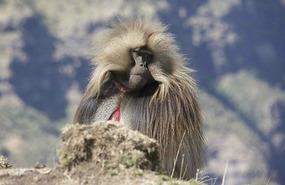
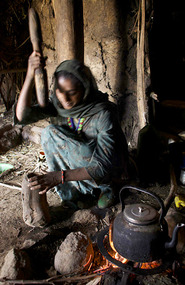
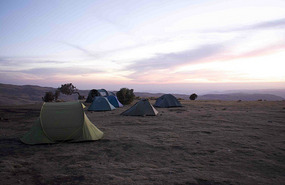
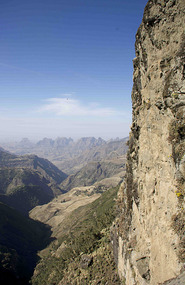
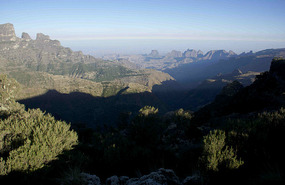









mary
2014-02-22
It all sounds marvellous , so pleased you are having the a great time
, Enjoy!!!!
will
2014-02-23
That all looks something else. Enjoy